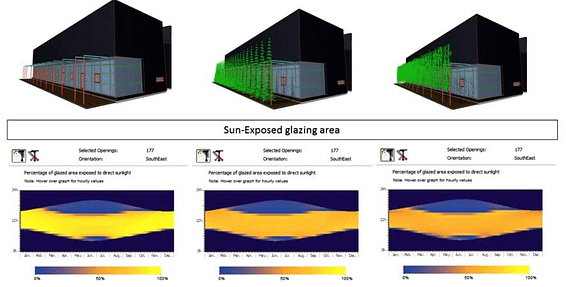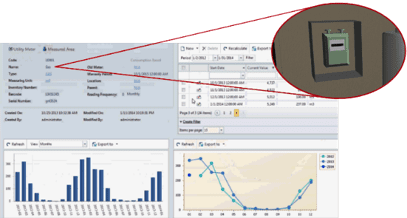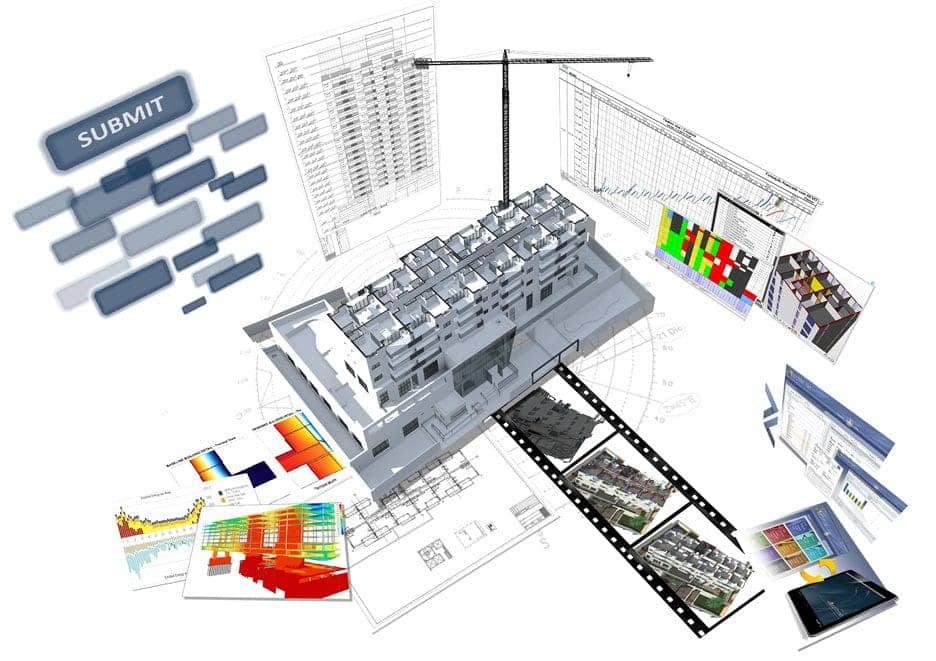For hundreds of years designers, contractors and owners have based their operations on two-dimensional drawings. Technology has evolved and these professionals currently have tools at their disposal that allow them to more rigorously simulate the behavior and costs of construction and operation of projects using three-dimensional models enriched with information.
Buildings are increasingly complex and the risks and costs inherent in their construction and operation are higher. In this way, the potential value and return on investment associated with the implementation of BIM becomes more and more noticeable.
Generating sustainable buildings is no longer just a noble desire, but an urgent necessity since, according to the American Institute of Architects (AIA), buildings are the main source of greenhouse gas emissions in the USA.
According to the European Commission, buildings are responsible for 40% of world energy consumption and 36% of greenhouse gas emissions (European Commission, 2013). Improving the energy performance of buildings is inevitable, not only to reach the near-zero-energy buildings (NZEB) target by 2020, but also to achieve the long-term goals of the climate strategy (up to 2050).
Several authors even mention that improving the energy performance of buildings will lead to economic savings between 30% and 75%, which means that energy efficiency is not only sustainable, but also profitable.
It is a fact that globally cities are experiencing exponential growth which has led to a significant increase in the complexity of their management. It is predicted that by 2030 (15 years to go…) 50% of the population will be living in urban areas. However, it is only recently that the importance of thinking about the development of large metropolises has been recognized in order to provide a sustainable development of the planet. Governments and the construction industry must overcome a set of new challenges. Challenges such as overpopulation can lead to higher unemployment and poverty rates, inadequate urban water and sanitation networks, and congestion, which result in CO₂ emissions and pollution and, consequently, a larger ecological footprint.
Therefore, it is up to current generations to look for the best technological solutions that allow satisfying this need, without compromising future generations.
This awareness of society and industry led to a demand for more advanced technologies and processes. This same demand promoted the accelerated development of new concepts such as BIM – Building Information Modeling. BIM is an integrated process that stores and streamlines the exchange of project, construction and operation information between the various stakeholders, through the creation of a three-dimensional model of the building enriched with its physical and functional characteristics, which has great potential in supporting decision-making in the various stages of the life cycle of an enterprise.
The more information the BIM model or the databases associated with it have, the greater the potential for representing the object to be built and, therefore, the higher the quality of the engineering simulations and the functional behavior of the building.
These simulations can include daylighting and solar studies, energy efficiency analysis and evaluation of the cost of operation and maintenance over the lifecycle of a building.
For example, if the south facade of a building has several windows that allow a sufficient supply of light to the building, the need for electric lighting will be minimized. However, if shading devices are ineffective, the building will potentially require cooling. Thus, it is extremely relevant that the designer, in the design phase, take advantage of the BIM simulation capabilities from the point of view of energy simulation, including issues such as HVAC and shading.

Another potential use of these technologies will be to study the movement of people throughout the day in the building and thus define the best heating and cooling system in the building to maximize energy efficiency by meeting needs.

The main 'players' in the market, such as IBM, Siemens and GE, are developing systems that make it possible to automate the management of real estate by means of intelligent buildings and equipment. In the future, BIM databases will support these systems. For this, it is essential that the models are maintained throughout the entire cycle, from the design phase to the operation. We need as-built models that serve as a basis for the management and maintenance of buildings. It is extremely important that we are able to accurately measure and monitor all energy consumption online. It is documented that providing building users with the ability to monitor their impact on energy consumption results in a change in behavior with a consequent reduction in energy. Measuring and monitoring energy use provides access to information for managers and users to make informed decisions on how to reduce a building's energy consumption.
The potential of BIM in the development of a sustainable project will depend not only on the maturity of the technology but also on the greater or lesser integration and collaboration between teams of specialists. The building must be thought through in its entirety and a paradigm shift in terms of project management will greatly contribute to this. Methodologies such as Integrated Project Delivery, together with BIM, increase the probability of achieving a sustainable building design, both environmentally and economically.
Sustainable architecture is the practice of designing, constructing and maintaining buildings so that their environmental impact is minimized. One of the most important aspects of sustainable design is energy efficiency – reducing the amount of energy a building consumes over its lifetime.
Nowadays there are several easy-to-use BIM software that provide energy analysis throughout the design process. These applications should be used at all stages of the project, providing information such as thermal zones and respective openings, surfaces and their respective thermal coefficients, exterior shading elements, building location and solar orientation information.
With technological evolution, the integration of BIM in the design, construction, operation and maintenance process is inevitable given the need to develop sustainable cities and buildings. However, we are facing a paradigm shift in the way of designing and managing the built stock. As in everything throughout history, the initial inertia to change on the part of some players in the sector will have to be overcome.

